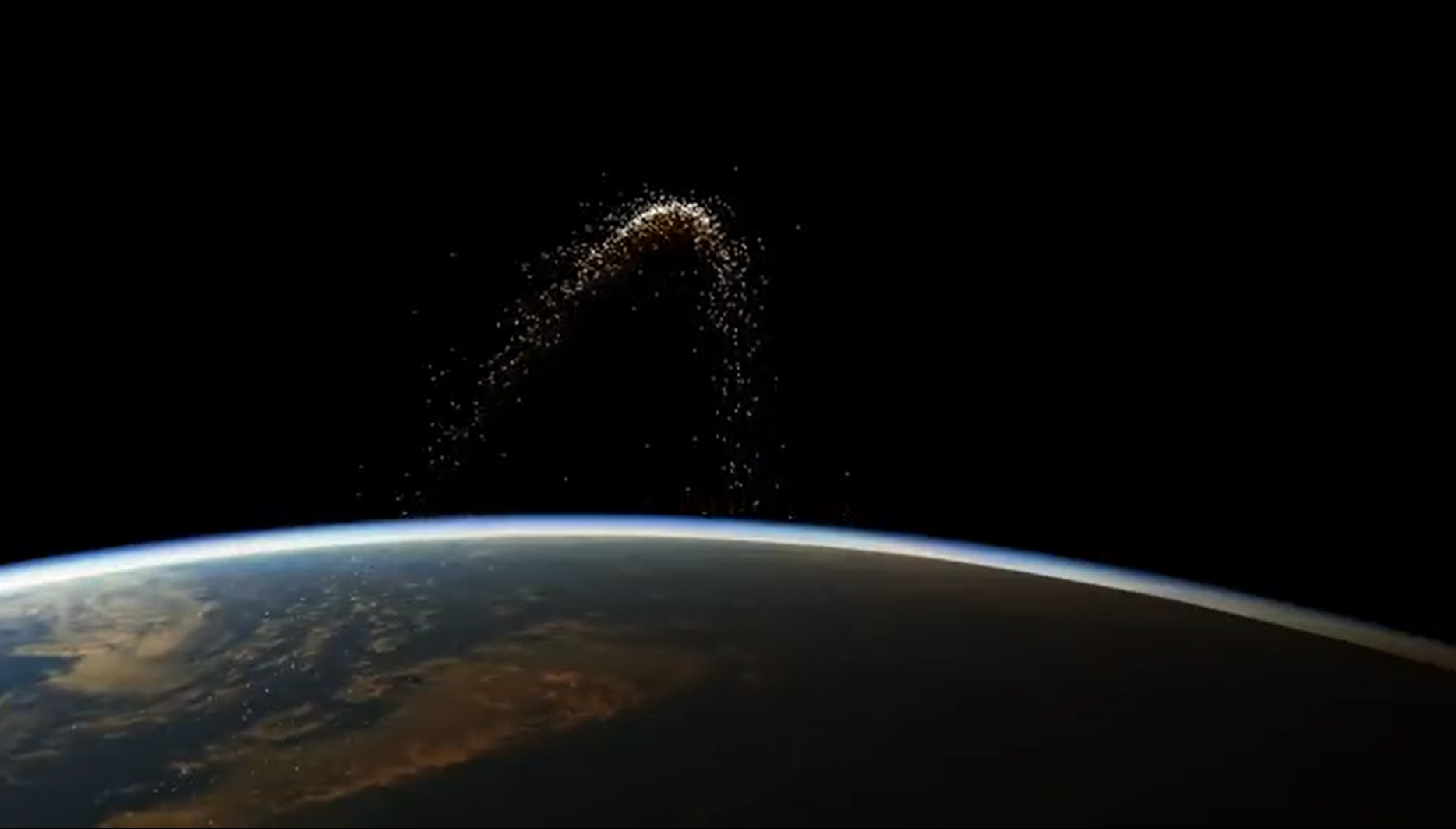
The United States will soon ask other nations to follow its lead and abandon destructive, debris-spawning anti-satellite testing, Vice President Kamala Harris said.
Harris made that pledge for the U.S. five months ago, and she announced a coming and concerted international push on Friday (Sept. 9) during a meeting of the National Space Council (NSC) at NASA's Johnson Space Center in Houston.
"This April, I announced that our nation would not conduct destructive direct-ascent anti-satellite missile testing," said Harris, who chairs the NSC. "And later this month, the United States will introduce a resolution at the United Nations General Assembly to call on other nations to make the same commitment."
Related: The most dangerous space weapons ever
The NSC helps shape American space policy. The body is made up of several dozen high-ranking government officials, including the vice president, the NASA administrator and the secretaries of defense and state.
Assistant Secretary of State Monica Medina represented her department at Friday's meeting, which was the second chaired by Harris. Medina pledged that State would work hard to bring other nations aboard on the anti-satellite test pledge during the U.N. General Assembly, which takes place from Sept. 13 to Sept. 27 in New York City.
"In the coming weeks, Assistant Secretary Stewart and her team will have extensive consultations at the U.N.," Medina said, referring to Assistant Secretary of State for Arms Control, Verification and Compliance Mallory Stewart. "Our goal is that this resolution is adopted with the broadest possible support."
Get the Space.com Newsletter
Breaking space news, the latest updates on rocket launches, skywatching events and more!
Direct-ascent anti-satellite (ASAT) tests, which use missiles to destroy dead or dying satellites, can generate large clouds of space junk that make Earth orbit a more dangerous place for other spacecraft to inhabit. Russia spawned one such cloud with a widely condemned November 2021 ASAT test; that new debris field has forced the International Space Station to make evasive maneuvers on multiple occasions.
The ASAT discussion was part of a larger conversation at the NSC meeting about responsible space behavior. Harris and other meeting participants, including Medina, stressed the importance of establishing such behavioral norms in an increasingly crowded and competitive space environment — and that the United States should set an example for other nations to follow.
That was also a theme at the first NSC meeting that Harris chaired, which took place last December in Washington, D.C. Harris highlighted two other big topics at last year's gathering: boosting American technological competitiveness by investing in STEM (science, technology, engineering and mathematics) education and using satellites to monitor and help mitigate climate change.
NSC members provided progress updates in these areas during Friday's meeting. For example, NASA Administrator Bill Nelson talked about the agency's Earth System Observatory program, which will use a new suite of satellites to study our planet in a variety of ways.
During Friday's gathering, Harris also announced a plan to open three STEM training pilot programs, one each in Florida, the Gulf Coast and Southern California. At each site, commercial space companies — including Blue Origin, Boeing, Lockheed Martin, Northrop Grumman and SpaceX, among others — will partner with community colleges, technical schools and trade unions to train the next generation of workers in the space field, from engineers to welders, machinists and electricians.
Mike Wall is the author of "Out There" (Grand Central Publishing, 2018; illustrated by Karl Tate), a book about the search for alien life. Follow him on Twitter @michaeldwall. Follow us on Twitter @Spacedotcom or on Facebook.
Join our Space Forums to keep talking space on the latest missions, night sky and more! And if you have a news tip, correction or comment, let us know at: community@space.com.

Michael Wall is a Senior Space Writer with Space.com and joined the team in 2010. He primarily covers exoplanets, spaceflight and military space, but has been known to dabble in the space art beat. His book about the search for alien life, "Out There," was published on Nov. 13, 2018. Before becoming a science writer, Michael worked as a herpetologist and wildlife biologist. He has a Ph.D. in evolutionary biology from the University of Sydney, Australia, a bachelor's degree from the University of Arizona, and a graduate certificate in science writing from the University of California, Santa Cruz. To find out what his latest project is, you can follow Michael on Twitter.









